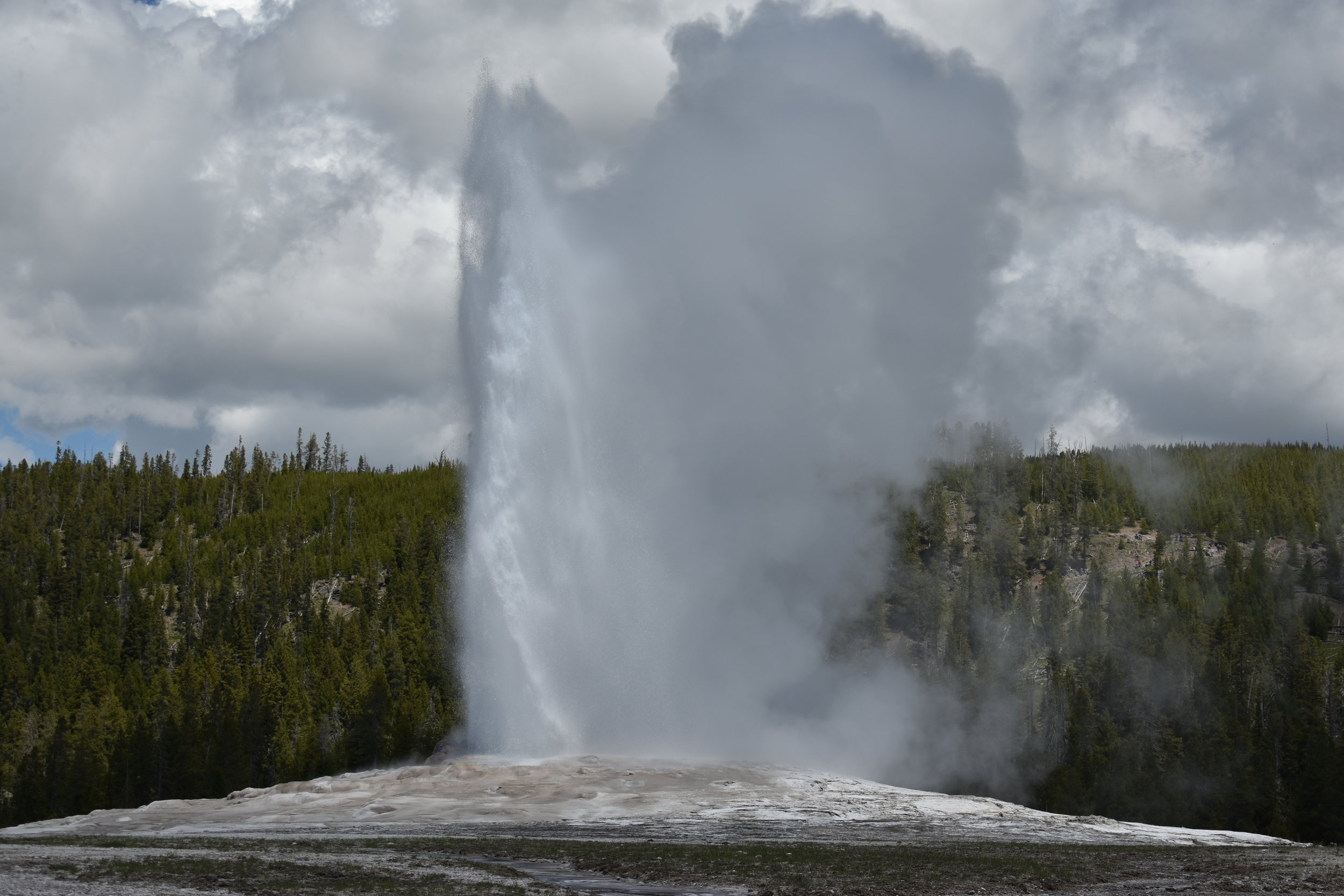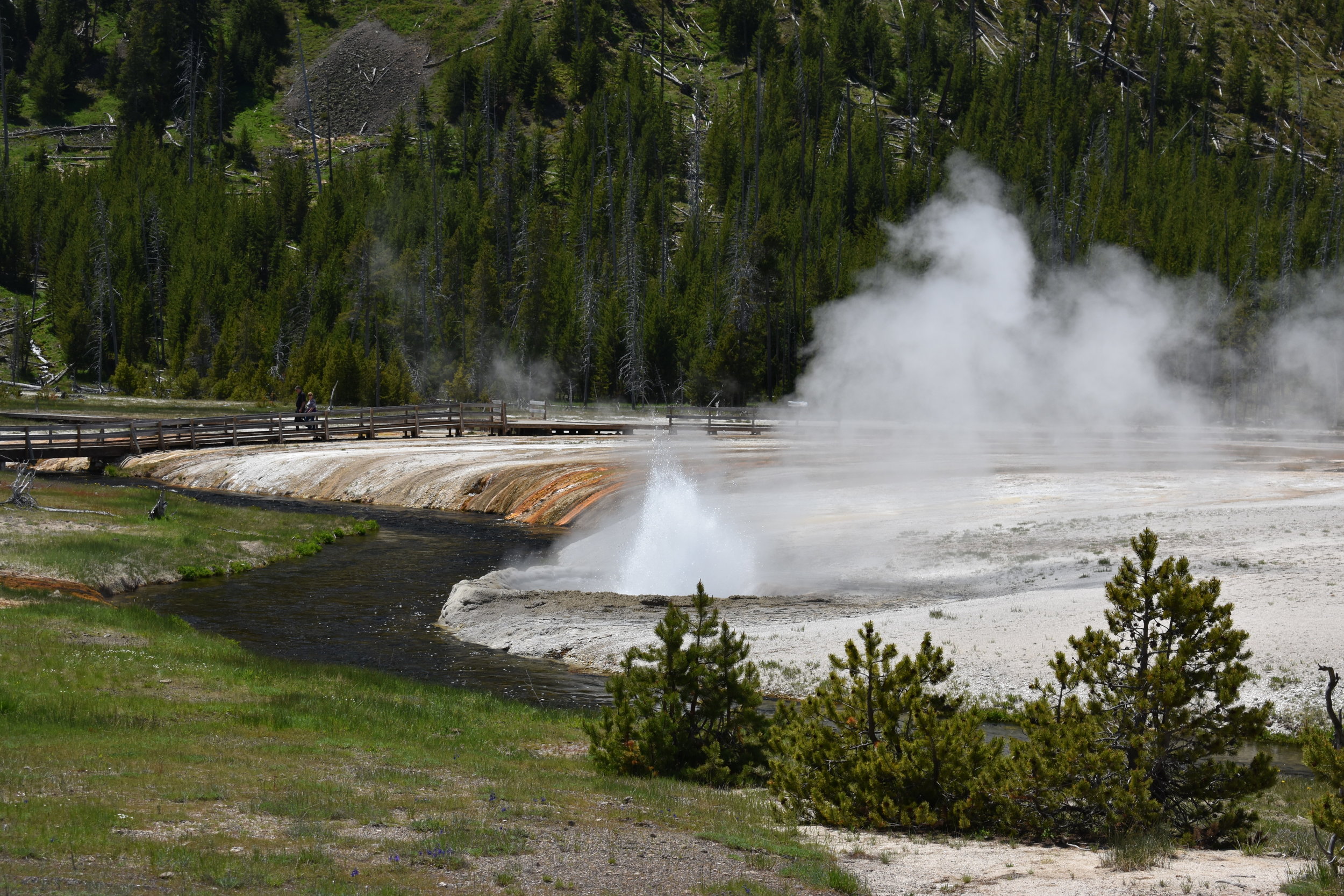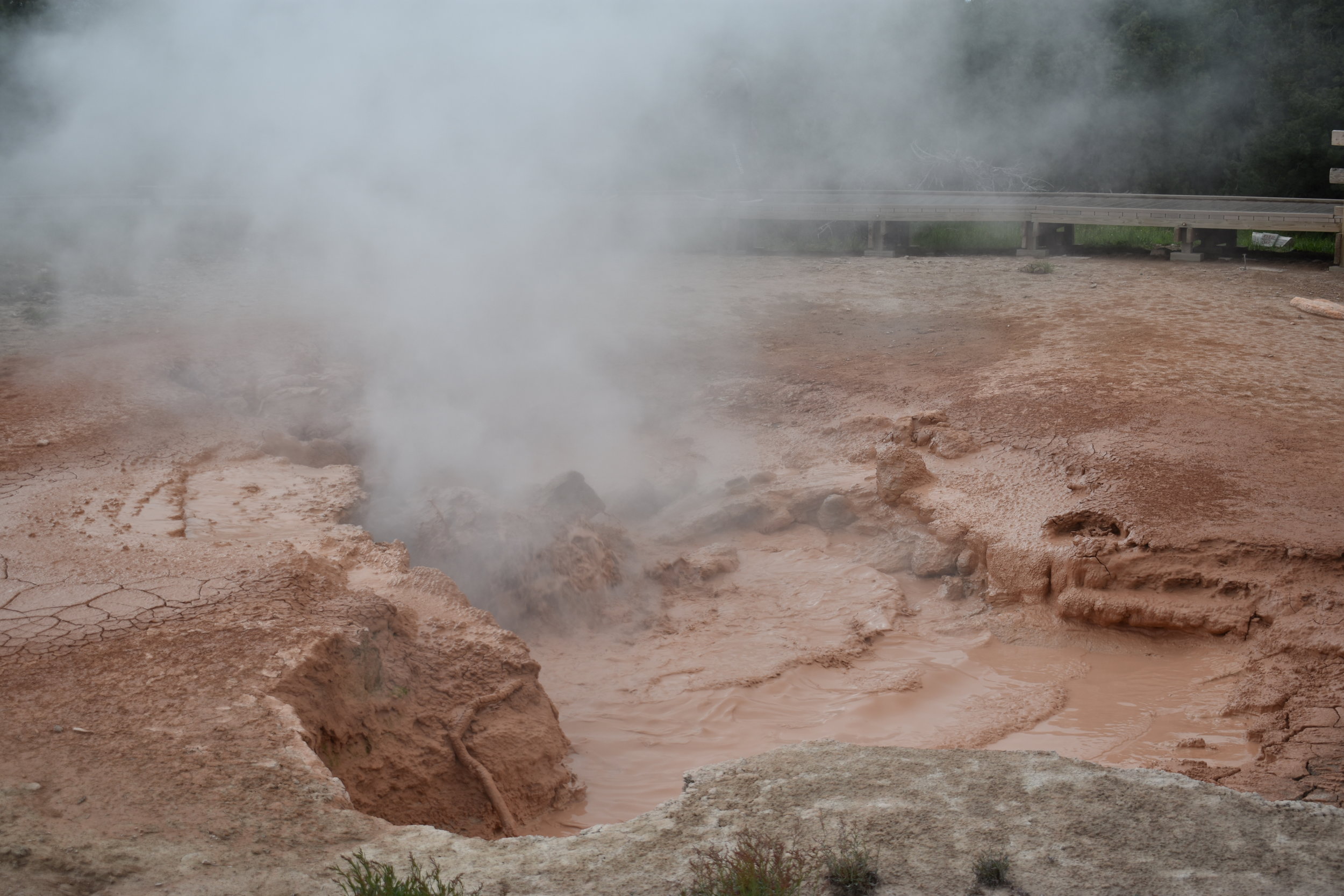Travel With Me: Yellowstone National Park (Day Four)
If you missed part one of this series, where we explored Mud Volcano, Norris Geyser Basin, and Mammoth Hot Springs, part two, where we explored the Grand Canyon of Yellowstone and West Thumb Geyser Basin, or part three, where we explored Tower Fall, Lost Lake Loop, and the Lamar Valley, make sure you click on the linked text or go to "Posts by Topic" to see the entire series listed under the Travel section.
Two weeks ago, I was given the amazing opportunity to explore Yellowstone National Park in Wyoming as part of a research grant through Minnesota State University's English department, where I am currently pursuing my MFA in Creative Writing. To join me on the adventure, I brought along my forever-traveling-partner, Mary, and my brother, Alan. This is the final day in my series about our time in Yellowstone, so let's jump right in!
The House on the Hill
This first stop isn't really in Yellowstone, but it's a strange sight for those who make the drive from Wapiti or Cody to the East Gate. For some reason it reminded me of Howl's Moving Castle, while Ryan told me it reminded him of the Weasley's house (the Burrow) from Harry Potter. One thing we could all agree on: it was a weird-looking building.
It was built by engineer Francis Lee Smith as a house for his family, but his obsession with adding on to it grew so intense that it caused his wife to divorce him. Without blueprints, or even electricity (only a single light bulb powered by a generator), Smith worked on the house all day and night. He died while working, untethered, on one of the roofs.
Old Faithful
The most famous of Yellowstone's geysers, Old Faithful is located in probably the most touristy section of the park. Throngs of people flock to the wooden platform where you can watch the geyser erupt at regular 44- to 125-minute intervals.
When we arrived, there was an hour until the next eruption, so we idled around the gift shop and museum, finally going to the wooden platform to eat our lunches. And it was a good thing we chose to get there early. As it neared thirty minutes to eruption time, the crowds descended, trying to squeeze closer and closer to the front of the pack, where we were. One woman literally shoved her way through and, despite the fact that the gap was surrounded by us and another family, sat directly in front of Mary. She then proceeded to take selfies with everyone around her (unfortunately, including me), using a futuristic audio translator to tell the little boy and girl beside her that they were beautiful and handsome, then asking them if they wanted to visit China. She seemed well-intentioned, however perhaps a little too friendly and intrusive for American culture.
The geyser erupts an average of about 145 feet for a few minutes, sending anywhere from 3,700 to 8,400 gallons of boiling hot water into the air. It was definitely a bucket-list experience to see it, but we had no desire to linger among the thousands of people heading towards Geyser Hill and Castle Geyser afterwards.
Upper Geyser Basin
Black Sand Basin
So named for the black obsidian sand covering portions of the basin, Black Sand Basin was a short drive away from Old Faithful. The hot springs here, including Emerald Pool (pictured above), Rainbow Pool (pictured above), and Sunset Lake (pictured above), contrasted brilliantly against stands of skeletal lodgepole pines. These pines were killed by the water from the thermal features, absorbing the silica from the water. As a result they have white bases and stand preserved for many years. In this basin, we also saw two geysers, Spouter Geyser and Cliff Geyser, erupt while we were there.
Biscuit Basin & Mystic falls
Biscuit Basin is named for formations that largely no longer exist. In 1959, an earthquake caused Sapphire Pool (pictured above) to erupt, breaking and dislodging the biscuit-like sinter deposits that once lined its edges. However, this is still a breathtaking basin, particularly the twin pools (pictured above), Black Opal and Black Diamond, and the golden sinter lining of Shell Geyser (pictured above). We also witnessed Jewel Geyser erupting.
Our other stop in Biscuit Basin was a short hike to Mystic Falls. The 2.5-mile loop is fairly easy through beautiful new growth forest; however, (as you can probably tell in some of the pictures) a storm was brewing. Partway through the hike, it started sprinkling on us. The view was worth it in the end, though. The water flows through a narrow slot in the rock to plummet 70 feet into the Little Firehole River below.
Midway Geyser Basin & Grand Prismatic Spring
Midway Geyser Basin possesses two of the largest hot springs in the world: Grand Prismatic, which is about 370 feet in diameter and as deep as a ten-story building, and Excelsior Geyser, which discharges nearly 4,050 gallons of boiling water per minute.
Our time in Midway Geyser Basin started off unfortunately. We accidentally started on the Goose Lake/Fairy Falls trail, thinking we could access the Grand Prismatic area from the other side. After making it probably a good mile, we discovered that this trail did not provide access to the hot springs, and we had to turn back, defeated, and hike another mile in the rain back to the car.
I'm not sure if it was the cold rain and wind that caused it, but the Midway Geyser Basin was covered in a dense layer of steam. Every time it blew across you and then you continued out of its path, it felt like stepping out of a warm shower.
Lower Geyser Basin
Firehole Lake Drive
This short one-way drive was a nice change of pace from trudging through the rain, allowing us to get off our feet and see a few miles of the 12-square-mile area of the Lower Geyser Basin. There was a sizable group stationed near the Great Fountain Geyser (pictured above), whose terraces were filled with water, meaning it would probably erupt within the hour. We didn't wait for it, but we did witness White Dome Geyser, a temperamental coned geyser built on an older hot spring, erupt, spraying water and steam about 20 feet in the air.
Fountain Paint Pots
In this area of the park, there are an abundance of different types of thermal features. In Silex Spring (pictured above), silica lines the bottom of the pool and forms terraces along the runoff channels; its name, Silex, is Latin for silica. The paint pots, originally called "mud puffs" by the 1871 expedition to Wyoming, are strange mountain formations of clay and silica, and as you can see, they are thin and watery during the spring; their spring boiling will result in even more spires and mounds as the mud thickens by late summer. The same 1959 earthquake that transformed Biscuit Basin opened up the Red Spouter. This unique formation exhibits the behavior of fumaroles (vents), hot springs, and geysers. When we were there, the water was red with mud, boiling and churning.
Sunset on Yellowstone Lake & Pelican Creek
After eating in West Yellowstone (at the Slippery Otter Pub--yes, that one still stings), we chased the sunset as our goodbye to Yellowstone. And let me tell you, after a sight like that, it was not easy to leave.
If you liked this post, click the heart button down below!















































